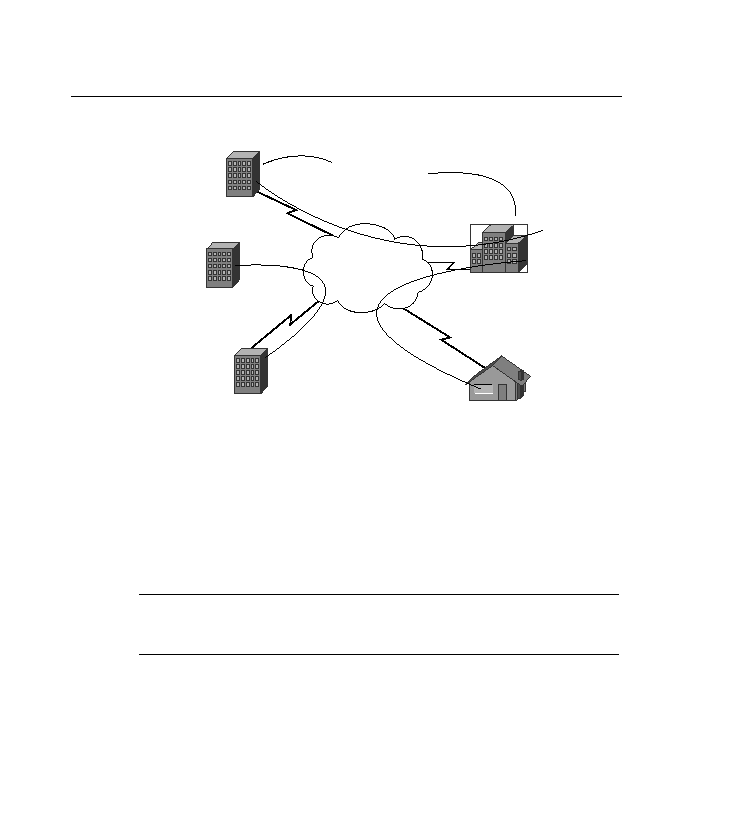
sites would be expensive, and Frame Relay might not be available in this area. The solution is
to purchase a VPN service from a provider. In this example, all traffic between sites is encrypted
for confidentiality. This is accomplished through the use of tunneling, of which there are three
main types: L2F, L2TP, and IPSec. The figure shows three different VPNs. The SOHO user is
accessing corporate resources (e-mail and servers) from the Internet. There is LAN-to-LAN or
remote-site connectivity through the Internet. And a remote site is performing some extranet
activity with one of its successful partners.
access the VPN calculator at http://www.cisco.com/warp/public/779/largeent/learn/
technologies/vpn/vpn_calc/vpnstart.html.
protocol focuses on providing a tunneling mechanism for transporting link-layer frames (for
example, HDLC, PPP, SLIP) of higher-layer protocols. Using such tunnels, it is possible to
separate the location of the initial dialup to the local ISP from the location at which the dialup
protocol connection is terminated and the location at which access to the network is provided
(usually a corporate gateway).